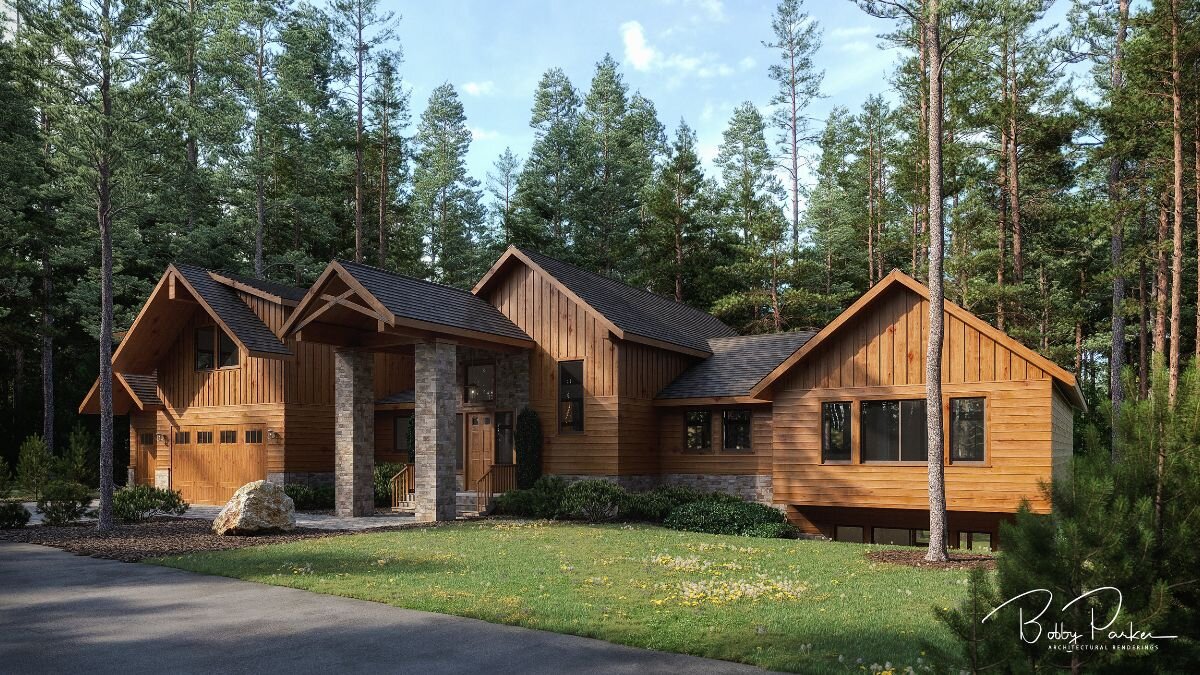What makes a good rendering?
Many elements in an architectural rendering come together to make an architectural rendering be considered "good." Some of these elements include but are not limited to lighting, the rule of thirds, lines, shapes, texture, patterns, and color. All of these things play an essential role when it comes to architectural renderings.
One of the most important of these elements is lighting.
Lighting is one of the most essential elements of an architectural rendering. If you make an architectural rendering with terrible lighting, the architectural rendering you are trying to produce will automatically be terrible as well.
Another vital element used to make a good architectural rendering is the rule of thirds. The rule of thirds is basically a rule of thumb that architectural illustrators use as a guideline for placing the subject in the architectural rendering. Rule of thirds is also used to make the architectural rendering visually appealing, more interesting, and catch the viewer's eye. You can also use this guideline horizontally or vertically, depending on the architectural rendering itself.
The leading line is another element that architectural illustrators use to make architectural renderings more appealing to the eye. The leading lines may not seem very useful or essential, but they significantly add to the overall composition. They also serve two purposes in architectural renderings. That is to lead the viewer's eye around the architectural rendering and keep the viewer's attention.
One other element that architectural illustrators use to make an architectural rendering better is shapes. Most architectural renderings contain one or more shapes. Still, those architectural renderings where the architectural illustrator uses shapes in exciting and unique ways really stand out and make an excellent architectural rendering even better. Much like lines, shapes also help catch the viewer's eye.
The texture is also an element that is used when making a "good" architectural rendering. The texture is the surface of an object with shapes, lines, color, patterns, and depth. While capturing texture in an architectural rendering, details are crucial. If an architectural illustrator captures the fine details, it makes the architectural rendering more lifelike.
Architectural illustrators also add patterns to an architectural rendering to add to the composition. Patterns are a repetition of colors, shapes, and objects. Using a pattern is the key to having a good composition in an architectural rendering. Patterns also give added interest to an architectural rendering. Architectural Illustrators add patterns to architectural renderings to keep the viewer's attention and draw them in.
One more element that architectural illustrators use while architectural rendering is color. Believe it or not, the color wheel is something that architectural illustrators use as a guide to which colors go best together in an architectural rendering. Colors on the color wheel are often referred to as hues. Colors opposite from each other on the color wheel typically go best together. Architectural Illustrators also usually use cool or warmer colors to give off a certain mood that they are trying to accomplish.
Many elements in an architectural rendering come together to make an architectural rendering be considered "good." Factors like lighting, the rule of thirds, lines, shapes, texture, patterns, and color all work well together to add interest and a great deal of composition in architectural renderings. These things all add to architectural renderings in their own unique way, and architectural illustrators typically use them to their advantage to improve their rendering and make them as well and professional-looking as possible.
Did you enjoy this article? I would love to hear your thoughts, so don’t be shy and comment below! Please don’t forget to subscribe to my RSS-feed or follow my feed on Twitter, Google+ and Facebook! If you enjoyed the following article we humbly ask you to comment and help us spread the word! Or, if you would like, drop me an email.




